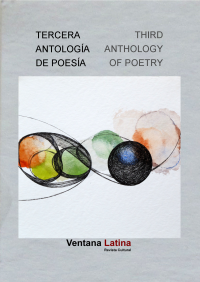Exhibition in memory of Guatemalan artist Francisco Auyón
‘With objects as images I respond to the eternal antinomies of life-death, sacrifice-redemption, sin-forgiveness, solid-void and the influence they have on individual and collective behaviour.’
Francisco Auyón, 1999
By Adam Robinson
My work is in aid of Francisco’s memory, extending an evocation of him and his work. However, it is also about being in memories of him, his profoundly mystical works and their personal and collective ‘other meanings’. Hearing stories of the love and torments of his life, and the unlikely events that have made me an agent of his history, has affected me deeply. I believe he understood his art to be timely and effective for Guatemalan hearts, minds and culture in dealing with the conditioning of the Civil War. But he was also contained within a relatable pattern that reached internally and externally into his heart and his culture.
The pinewood ladder is just one of the street-sold objects that surrounded Auyón’s home, and which he used as a symbol. The ladder is an ancient element of a still largely indigenous vendor economy in Guatemala City. The cultural resonance of these cheap, traditional objects is deeply profound. They are visibly sold symbols of the recently massacred Mayan heritage from which they come.
Auyón called them ‘popular’ and ‘common to all’, present in most homes in Guatemala. They represented mourning and troubled figures engaging with these objects in precarious manners, the fragile and burdened existence of the people around him.
Mass graves in Guatemala City Cemetery Photo: 2 July 2016, A. Robinson.
The relationships between figures and objects in his art as it developed always had personal reflections woven into it as well. Rising from nothing to quick fame, he embraced his own struggle with extreme excitement and angst about his identity and troubled past. Two wooden heirlooms from his mother, which he kept in his studio, were a serious part of the story of his development. From a colourful, neo-figurative and magical realist painter, to a tragic and playful esoteric symbolism that could translate across mediums, Auyón condensed the gnostic imaginary that brought him to be titled as a ‘Weaver of Myths’. He put into play the real places and spaces of his country’s complicated, hybridised and horrific historical memory.
However quietly dedicated and shy, Auyón followed the artistic debates of the ’90s, and exhibited and experienced contemporary art in Egypt, Germany and the U.S.A., to name a few countries outside Central America. He was torn between cultural internationalisation and the desire to recover something of Guatemala’s silenced, ancient land-bound heritage. His conviction in the relational action between objects and figures was something he believed could resonate beyond Guatemala’s particular historical conditioning.
Working subsumed in his memory, I was awash with emotions of the tales of his life during the storm in Santiago Atitlán last year. I sought a balance of extro- and introspection with my research project, something like different kinds of peace both outside and within myself. Like many of his images, my photos work with feelings of presence and absence, and arrive as telling stills from within a tumultuous process.
With special thanks to the fantastic team at Hoxton Cabin; for inspiring teaching at ESCALA; invaluable aid from Max at London Picture Framking; and for sponsorship from Come Up Records.
*
In search of Auyón’s history, Adam Robinson received the Tim Laughton Travel fund award from Essex University last year. Before beginning his meetings, he visited Lake Atitlán and the town of Santiago Atitlán. The photos on show were taken during a storm there, on 17 June last year.
When Auyón left art school and began exhibiting, he was like many others, affected by the fact that the Guatemalan army opened fire on a crowd of around 3,000 Tzutujil Mayas in Santiago Atitán. This event, on the 2nd of December 1990, was like many in the past, just a night on the town for the soldiers. However as a tourist spot, and with two civilian candidates finally running for election, international outcry and popular pressure broke new ground. Following the attack on the mayor and his people, Atitán became one of the few communities with over 10,000 people without a military base.
Ten years since his death, this exhibition is a tribute to the life of the Guatemalan artist Francisco Auyón. Entry is free, but all donations and sales will be in aid of launching an art foundation for children near Auyón’s home in Guatemala City, directed in collaboration with his widow and children.
Address:
Hoxton Cabin, 132 Kingsland Road, London, E2 8DP
Until 29 July 2017




 Copyright © 2024
Copyright © 2024